10 Types of Shrimp to Adorn Your Seafood Platter
Author: Anne Cowart | Editor: Omar Alonso
Review & Research: Jen Worst & Chris Miller
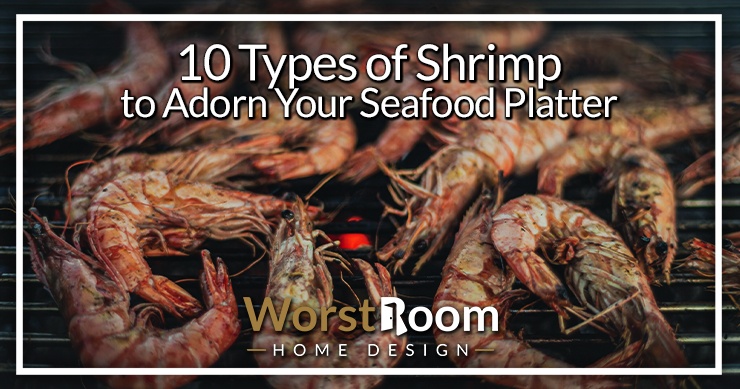
If you thought that picking out the right types of shrimp at the local supermarket was a fairly straightforward task, you’ve got another thing coming... There are upwards of 300 shrimp species, which means that things can go from straightforward to confusing pretty quickly.
The average American eats around four pounds of shrimp a year. If you’re going to be eating this many shrimp annually, it only makes sense to be eating the right, melt-in-your-mouth varieties and not the unsavory, tough ones. Knowing your shrimp types will go a long way here.
10 Types of Shrimp
So here’s a list of the many different kinds of shrimp that you can consider putting on or leaving off your dinner plate. Enjoy them on a seafood platter, in a pasta dish, in various types of sushi, and much more. Their uses as a food source in the kitchen are wide and varied.
Rock Shrimp
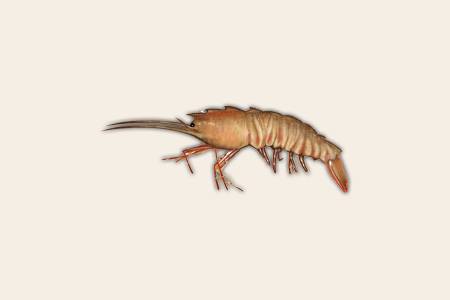
Scientifically known as Sicyonia brevirostris and colloquially as rock shrimp (for their hard shells), this shrimp variety is widely used and relished today for its sweet, juicy-yet-firm meat. Among all the different types of shrimp, these are extremely common as a food source these days. It's quite the story, actually.
Until a special machine was engineered expressly to peel and devein them in the 1960s, rock shrimp catch was usually thrown away because of how hard it was to get the meat out of the shells. Additionally, with a maximum growth of three inches, peeling was a lot of work for a tiny bit of meat.
Now, thanks to the wonders of science and technology, you can easily pick up packets of frozen, peeled, deveined, and beheaded rock shrimp off the shelves of your local supermarket. You can also buy them unpeeled, in which case, they make excellent subjects for grilling.
Rock shrimp inhabit the temperate Atlantic waters spanning from the Bahamas to the Gulf of Mexico and some parts of the Pacific, settling in the cold depths, and are generally available for most of the year.
Due to a flavor profile that’s similar to lobster meat, rock shrimp make an excellent, inexpensive substitute for highly expensive lobster meat, perfectly taking the latter’s place in a range of recipes.
Royal Red Shrimp
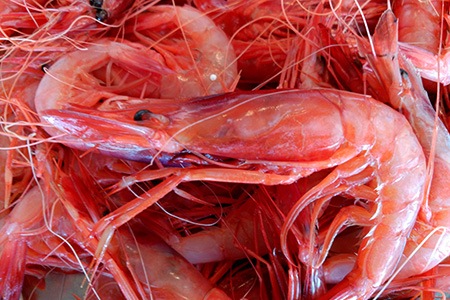
These prized varieties of shrimp, often deemed the Atlantic’s crown jewel, are the caviar of the shrimp universe—expensive, rare, and widely enjoyed.
Royal red shrimp are beloved for their tender, sweet, firm meat and a natural buttery, salty flavor, the latter a result of the deep-sea regions (between 500 and 2,000 feet) that these shrimp reside in.
Because of their amazing, organic flavor, royal reds are very lightly cooked and seasoned and eaten without accompanying condiments, though I must say it's hard for me not to dip them in any types of pasta sauce.
White Shrimp
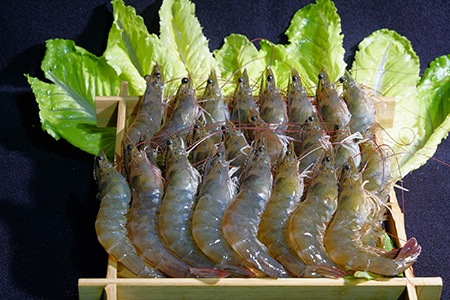
If royal red shrimp are the caviar of the shrimp universe, white types of shrimp are the Parmesan cheese—dessert or savory courses, they can be eaten in any way and with anything.
White shrimp are pretty much the same—they have a sweet, clean flavor profile and a firm texture, which means that they easily soak up seasoning and sauces while also holding up extremely well against a range of cooking techniques.
Due to this, white shrimp are enjoyed fried, poached, baked, stuffed, roasted, a la plancha, or even just raw. White shrimp can reach maximum lengths of eight inches, so there’s also quite a relatively generous bit of meat to savor.
White shrimp can be divided into three main sub-varieties, namely the Pacific white shrimp (also referred to as king prawn and whiteleg shrimp), the Gulf white shrimp (also referred to as Atlantic white shrimp, green shrimp, gray shrimp, and camaron blanco), and the Chinese white shrimp (also referred to as fleshy prawn and oriental shrimp).
It should be noted that though they’re delicious, white shrimp are considered environmentally unsustainable due to the harvesting methods employed. This shrimp variety nests in shallow, coastal waters (at a maximum depth of 90 feet); therefore, they’re harvested through trawling, which has extremely negative impacts on the seabed.
Tiger Shrimp
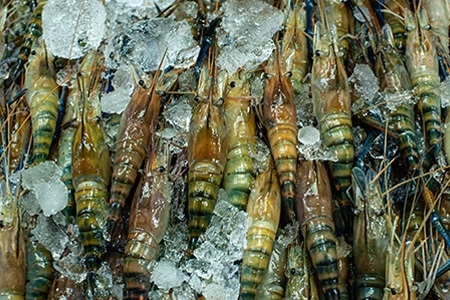
Penaeus monodon is the largest shrimp variety that is sold and consumed, with full-grown shrimp reaching maximum lengths of 11-13 inches. They get their name from the black and red stripes that adorn their shells, as well as from their size.
This shrimp variety is a warm-water resident, naturally found in the temperate Indo-Pacific areas, such as Vietnam, Thailand, Philippines, and India. They’re also bred and harvested on farms in Madagascar.
Firmer and blander than most other shrimp varieties, these shrimp are best enjoyed with strong added flavors and rich sauces, though many folks also prize their bland flavor and enjoy the meat grilled or steamed.
Pink Shrimp
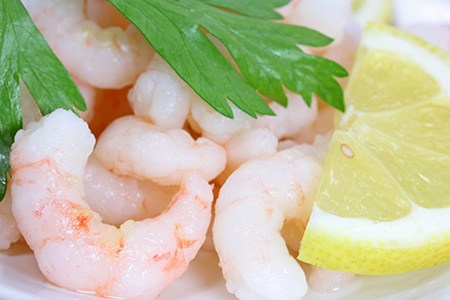
Also referred to as Gulf pink shrimp, this shrimp variety is plump and relatively small (around eight inches), owing to which it’s a favorite in salads (and hence, also known as salad shrimp).
Pink shrimp only turn pink once cooked; you’ll find them in gray and white hues in their raw form or red, if alive, with a see-through body and shell. These shrimp are residents of southern Florida’s sunny coasts and can be found throughout the year (though the peak season coincides with the cold winter months).
The naturally sweet, mild flavor of the meat shines through best when you steam, boil, pan-fry, or grill these types of shrimp. Just as it is with white shrimp, there are quite a few sub-varieties of pink shrimp too.
The primary four are Southern pink shrimp (also known as Brazilian pinks), Gulf pink shrimp (also known as skippers, hoppers, and Northern pinks), Oregon pink shrimp (also known as Pacific Rink shrimp), and Northern shrimp or prawns (also known as Maine shrimp, deepwater prawn, and Great Northern prawn).
Brown Shrimp
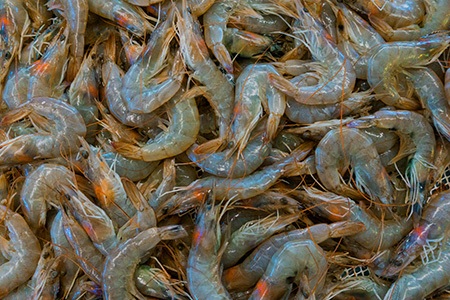
Brown shrimp, or common shrimp, form the majority of the shrimp sold domestically in the United States. These shrimp types have the firmest texture of all shrimp varieties, and the thing about these shrimp’ flavor profiles is that they can change with their diet.
So, depending on what the shrimp had been feasting on just before it was caught, you’ll either have a mildly sweet flavor, an earthy flavor, or even a bromine-like flavor (from ingesting the sea worms that inhabit the seabed).
Regardless of these specific tastes, though, brown shrimp have an overall delicious umami flavor, which makes them pair well with other seafood such as the various types of clams.
Brown shrimp become pink once cooked and are commonly served boiled or steamed so that the natural flavor isn’t overpowered by added sauces and seasoning (though a dash of lemon juice will have your taste buds singing!). One of the most popular dishes that features brown shrimp is jambalaya, a New Orleans staple.
Another popular favorite is southeast Asia’s shrimp paste—a sharp condiment made from dried, ground brown shrimp and used to flavor everything from curries to soups to sauces to stews.
Brown shrimp are also among the more sustainably harvested shrimp varieties, harvested in the shallow, chilly Atlantic waters spanning from the Yucatan peninsula to the south of Massachusetts.
Brown varieties of shrimp have two main sub-varieties, namely the Northern brown shrimp (also known as redtails, Brazil shrimp, red shrimp, and golden shrimp) and Mexican brown shrimp (also known as Yellowlegs).
Spot Shrimp
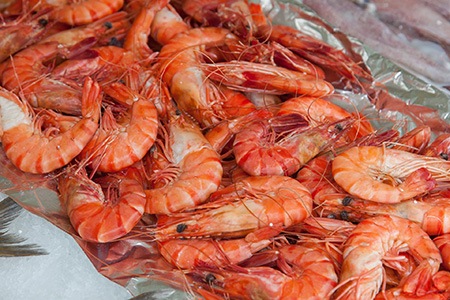
Also commonly called spot prawns (though they’re not actually prawns, lacking the number of claws, among other differences), spot shrimp get their names from the white dots on their shells, and are also nicknamed “the Lobsters of Alaska” due to their lobster-like color and shape.
Compared to other different kinds of shrimp, spot shrimp meat is quite sweet, tender, and juicy, but their delicate meat, along with their delicate shells, makes them quite a nightmare to clean and peel.
Spot types of shrimp grow up to 5 inches, with some jumbo variants that can reach 12 inches. This shrimp variety is commonly found in the country’s west coast region and can be cooked in myriad ways, from steaming to broiling to grilling to deep-frying to lightly sauteing.
Banana Prawns
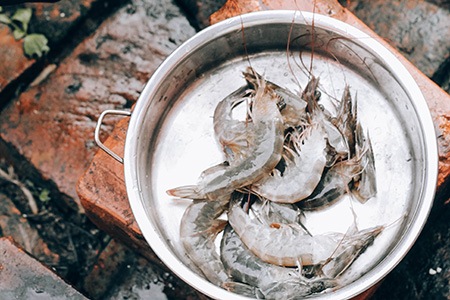
Whether these are actually prawns or just another shrimp variety is highly debated, but this variety of freshwater seafood is quite commonly found and relished in the Land Down Under! The meaty, thick mouthfeel of this variety makes it a great option in fillings, burgers, and grilling.
Named for their distinct shapes, banana prawns are also found in the waters surrounding Indonesia and Thailand and can be divided into two sub-varieties—white banana prawns and red-leg banana prawns. Banana prawns can grow up to seven inches in length.
Aesop Shrimp
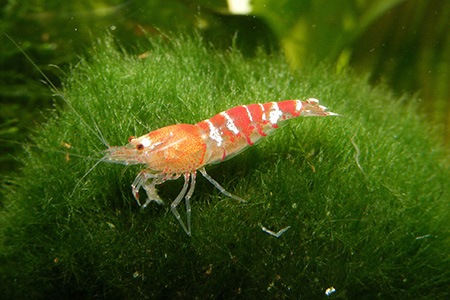
Also referred to as pink-striped shrimp and Aesop prawns, these shrimp are much sought after for their sweet, tender meat that makes them an excellent addition to salads, as poached meat, or served along types of oysters and other seafood.
These shrimp types are typically found in the waters of northern Canada, inhabiting the ocean floor anywhere between 30 and 300 feet below.
Aquarium Shrimp
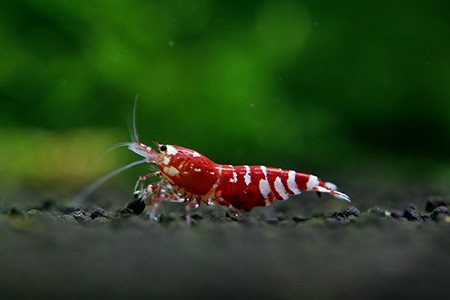
Some shrimp varieties may be better off in your aquarium instead of on your plate, such as:
- Cardinal or Sulawesi shrimp
- Ghost/Glass shrimp
- Amano shrimp
- Bumblebee shrimp (Striped Harlequin)
- Black King Kong Panda shrimp
- Snowball shrimp
- Blue Tiger shrimp
- Red Cherry shrimp
- Bluebolt shrimp
- Crystal shrimp
- Caridina Babaulti shrimp
When it comes to keeping shrimp as pets, it’s better to stick with the shrimp species listed above due to their size limitations and ability to survive the environment you’ll have for them.
Types of Shrimp to Expand Your Seafood Platter
With so many shrimp varieties across the world, it’s no surprise that shrimp are the global culinary phenomena that they are. In salads, steamed, fried, baked, broiled, grilled, you name it—you can relish this versatile seafood in just as many ways as there are varieties.
However, do note that not all of the different types of shrimp are sustainably harvested and trawling is destroying ocean floors and seabeds at alarming rates. If you’d like to do your bit for the environment, you may want to consider shrimp with the Fair Trade certification.




